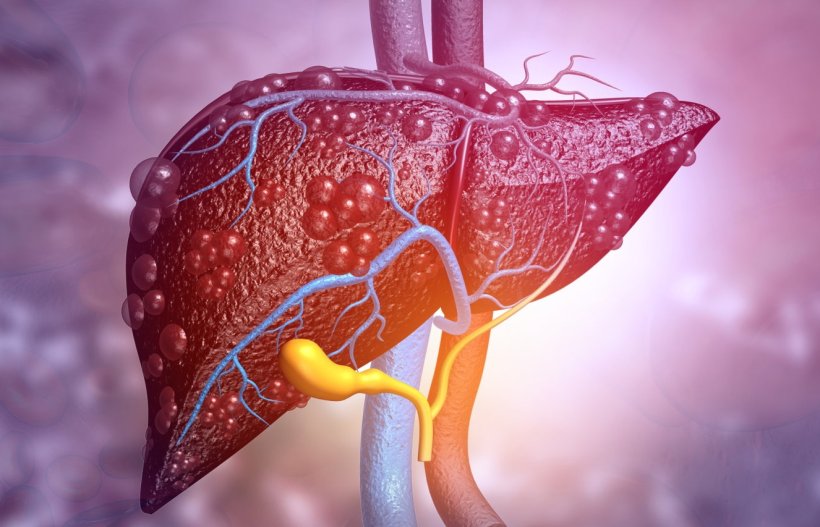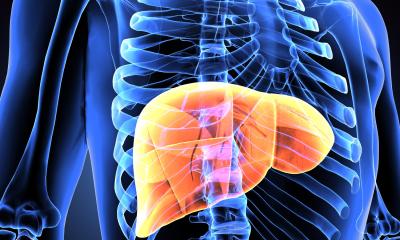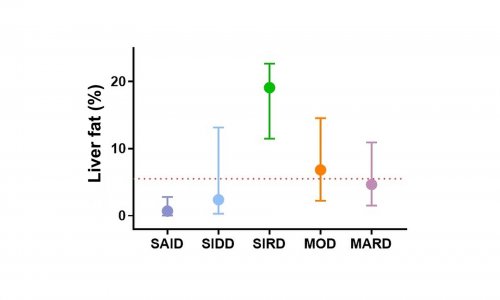
© Rasi – stock.adobe.com
News • Advances in precision medicine
MASLD: Research reveals two types of fatty liver disease
Researchers at Karolinska Institutet and the University of Gothenburg have identified two types of metabolic-associated fatty liver disease – a liver-specific type and a systemic type that affects other organs and tissues.
The discovery could lead to improved diagnosis and treatment of this growing patient group. Two studies are published back-to-back in Nature Medicine.1,2
Metabolic dysfunction-associated steatotic liver disease (MASLD) is characterised by an excessive accumulation of fat in the liver, which can lead to severe liver damage such as cirrhosis and liver cancer. MASLD is caused by overweight and obesity and it is a major and growing burden globally. It is estimated that one in four adults worldwide lives with MASLD, but most people are unaware because it only becomes symptomatic at an advanced stage.

Image source: University of Gothenburg; photo: Johan Wingborg
Researchers at Karolinska Institutet and the University of Gothenburg in Sweden have now identified two different types of MASLD by analysing data from over 36,000 participants from the UK Biobank and from other studies.
“We discovered that there are at least two types of steatotic liver disease with different clinical trajectories,” says Stefano Romeo, Professor at the Department of Medicine, Huddinge, Karolinska Institutet, who led the research. “One is more aggressive and mainly affects the liver, while the other is entwined in the cardio-renal-metabolic syndrome.”
The researchers used genetic tests to identify 27 new genetic variants linked to MASLD. By analysing these genes, they were able to determine two different risk scores related to the two types of MASLD. The liver-specific type is more aggressive and can lead to severe liver damage but protects against cardiovascular disease, while the systemic type is associated with a higher risk of diabetes, cardiovascular disease, and heart and kidney failure.
“This discovery is important because it helps us understand why some individuals develop more severe liver diseases while others suffer from cardio-renal diseases,” explains Stefano Romeo. “This will allow us to better predict the progression of these diseases and tailor the treatment to the specific needs of the patient.”
This research is a step forward towards precision medicine, where treatments are tailored to suit individual needs based on genetic and clinical information
Stefano Romeo
The back-to-back publication that professor Stefano Romeo co-led with researchers at Lille University, France, showed similar results using another method, so-called unsupervised clustering. “This work on clustering using simple clinical variables is of utmost importance because it allows us to differentiate at an individual level who has MASLD and will develop cardiovascular disease and who will not,” says Stefano Romeo. The cluster prediction can be obtained by using a simple calculator.
The study also highlights the importance of genetic research in understanding complex diseases like MASLD and the mechanisms causing the cardio-renal-metabolic syndrome. “This research is a step forward towards precision medicine, where treatments are tailored to suit individual needs based on genetic and clinical information,” says Stefano Romeo. “It can also raise awareness of how genetic and environmental factors affect our health and underlines the importance of continued research in this area.”
The research was mainly funded by the Swedish Cancer Society, the Swedish Research Council, ALF funds, the Swedish Heart-Lung Foundation, the Knut and Alice Wallenberg Foundation, and Novo Nordisk Foundation. Several potential conflicts of interest are listed in the article. Stefano Romeo has consulting for AstraZeneca, GSK, Celgene Corporation, Ribo-cure AB and Pfizer over the past five years and has received a research grant from AstraZeneca.
- Jamialahmadi, O et al.: Partitioned polygenic risk scores identify distinct types of metabolic dysfunction-associated steatotic liver disease. Nature Medicine 2024
- Raverdy, V et al.: Data-driven cluster analysis identifies distinct types of metabolic dysfunction-associated steatotic liver disease. Nature Medicine 2024
Source: Karolinska Institute
11.12.2024











